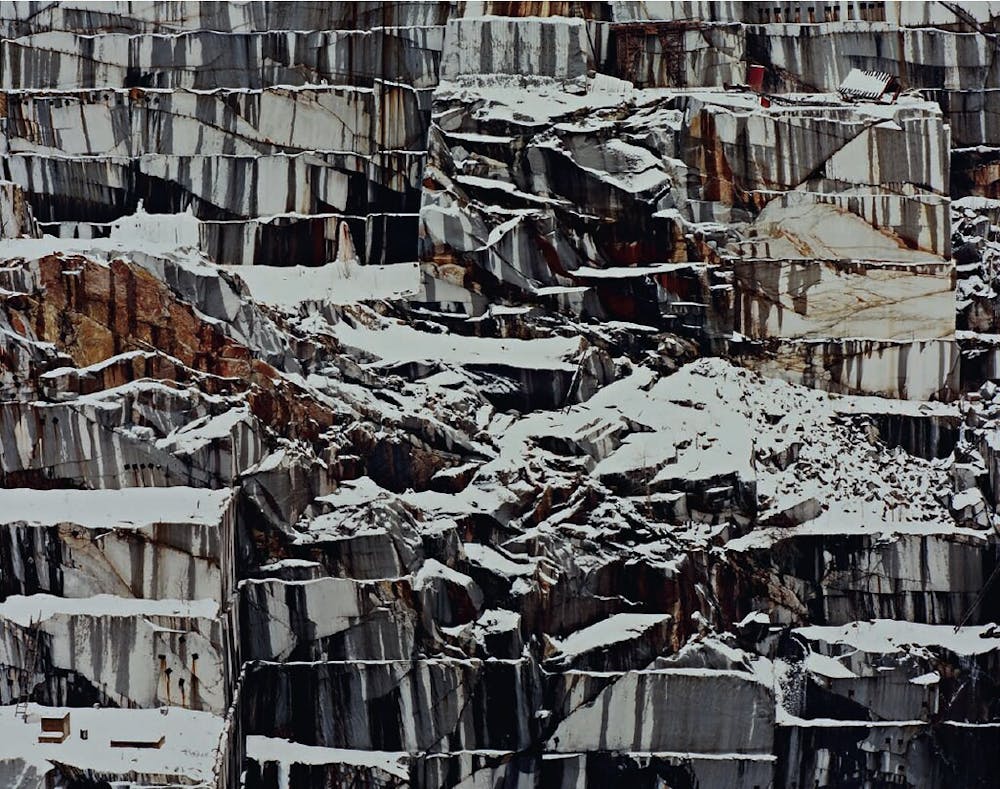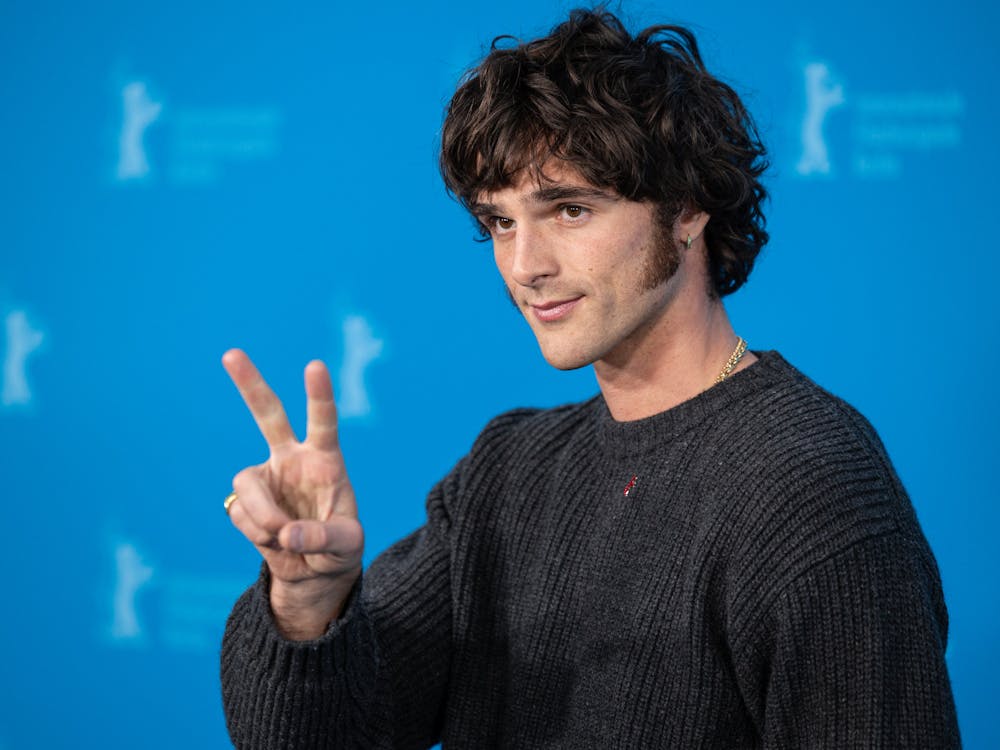The History of Art and East Asian Studies departments sponsored an event titled “Documenting Industry: Photography, Modernity and the Nation in India and China” on Feb. 19. Scholars from around the world joined the Zoom-recorded event, presenting original research on ways in which documentary photographers have explored the lives of industrial laborers in India and China.
Rebecca M. Brown, professor and chair of the Department of the History of Art, welcomed attendees and offered a brief introduction to the topics at hand.
“Documentary photography has never been simple or straight, and [it] has always been bound up with and actively participating in the relation among laboring bodies, factories, infrastructural projects and the media that disseminates and frames these images and the politics embedded in all of these things,” she said.
What followed was a fascinating series of presentations from professors at the Indian Institute of Technology (IIT) Guwahati, Hopkins and the University of Maryland.
Ranu Roychoudhuri from IIT Guwahati presented first. She discussed how photography had the function of not only documenting history but also capturing sophisticated man-machine relations. Her presentation, titled “Framing Industrial-scape in Post-Independence India,” began with quotes from India’s first prime minister, Jawaharlal Nehru, and Sunil Janah, who worked as a photojournalist and documentary photographer in India during the mid-20th century.
This quote from Janah captured the crux of her presentation:
“The most striking aspects of these photographs were, to me, the very modern industrial structures being built manually by primitive villagers and tribals carrying cement mixtures in pails on their head at the worksites, where giant steel piles were being driven into the ground by even bigger machines, and monstrous earth-moving machines were roaring around.”
Roychoudhuri then launched into a discussion of the works of Janah, Amil Dali and Werner Bischof.
I was struck by how many of these industrial photographs paradoxically seemed to humanize machines, making them appear as extensions of human labor rather than as capital goods divorced from human aspirations. Many of these photographs were beautiful; perhaps it was the way in which the pictures were composed or the way they juxtaposed human limbs and faces with the mechanical appendages of factory equipment.
Indeed, one of Roychoudhuri’s hypotheses concerning the photographs was that they “flipped” the idea of what it means to humanize and aestheticize machines.
Roychoudhuri brought forward several other hypotheses: that these photographs depicted and critiqued their subjects, that they had the effect of helping people visually apprehend the Anthropocene (for instance, by foregrounding heavy pollution) and that they invited viewers to rethink what it means to see the beauty in industrial environments that they would not usually associate with beauty.
The next presentation was from Gaochao He of the East Asian Studies department, titled “The Engaged Lens: Documentary Photography and the Industrial Workplace in China.” His remarks were broad-reaching and fascinating.
Pursuing a more historical line of inquiry, He discussed how documentary photography in China tracked shifting labor relations during China’s industrialization. The subjects of his chosen photographs were wide-ranging: pictures of Chairman Mao inspecting a factory-produced car, soot-covered workers repairing blast furnaces and socialist realist portraits of “labor heroes” meant to galvanize the labor force.
“Putting everything together, [these images] represent the imagination of the beauty of industry and the power of the steel mill and this new generation of workers [in the 1950s],” he said.
Some of his photographs also featured scenes of demoralization and suspicion of industry. My personal favorite was an image of workers at an electronics factory reclining on their seats in exhaustion; no human faces are clearly visible except for that of one young woman who stares blankly into the camera lens. Her expression is unreadable, but somehow the body language of her colleagues offers insight into what she might be feeling.
We returned to India with Mircea Raianu’s presentation, titled “Industrial Photography, National Capitalism and the Laboring Body in 1950s India.” Like Roychoudhuri, Raianu, who is a professor at the University of Maryland, was interested in the works of Janah and Bischof, as well as the relation between the human body and the machine. His presentation was particularly focused on images of miners and private factory advertisements.
What was most interesting about Raianu’s presentation was that his chosen photographs seemed to advance competing narratives. On the one hand, he noted that some pictures seemed to subscribe to a “declinist automation narrative,” which critiqued labor exploitation and the replacement of workers by machines, while others subscribed to a “progressive skilling narrative,” which stressed how workers and machines could complement each other. Raianu argued that the second narrative may have functioned as a convenient public relations gambit. Speaking of one image of women carrying rocks on their heads through a quarry, he noted that this gambit would have hidden some of the material realities of workers.
“I don’t think anyone can look at these photos and say a new India is being born,” he said.
That said, Raianu stressed that the distinction between these narratives was rarely clear-cut, especially under the progression of neoliberalism.
Stuart Leslie from the Department of the History of Science and Technology was the concluding speaker before the Q&A session. His presentation compared the viewpoints of various artists in framing the industrial landscape. He spoke about the effect of Henry Ford’s factory in Detroit as a lodestar to India’s industries and the various problems associated with capturing a “manufactured landscape.”
Juxtaposing Charles Sheeler’s images of Ford’s Detroit factory with Diego Rivera’s murals, Leslie described Sheeler’s photographs as “menacing” due to the lack of human presence, likening the factory to a “cathedral of the machine age.” In comparison, Diego Rivera depicted the labor theory of value in his murals by painting workers toiling together in the factory. Leslie explained that images that glorified industrialization often failed to show the people and communities that were displaced as a result.
Next, Leslie compared two artists, W. Eugene Smith and Charles Harris, in their depictions of Pittsburgh. While Smith showed the active workers as heroic, he also displayed their personal lifestyles within the city. Harris, a Black photographer, turned his lens to Black communities within Pittsburgh, including an early civil rights protest.
Leslie closed his presentation by showing the work of Edward Burtynsky and the aestheticism of manufactured landscapes. Burtynsky’s work has often been criticized due to its large size formats, which while visually striking, can be seen as uncritical of true working conditions. Leslie rounded out his talk with a question.
“How do documentary photographers capture the financial landscape that makes the manufactured landscape possible?” he said.
The panel then proceeded to a Q&A format. When pressed further on India’s burgeoning post-colonial industrialism under the pretense of nation-building, Raianu made an analogy to the pyramids.
“The pyramids are a good parallel to think about this,” he said. “We have the idea of people carrying rocks. This is the common thread of representation that takes us through the different photos from 1950 to 2012 photos. These photos have associative evocations of ancient ruins.”
Through the lens of documentary photographers, one can easily find traces of Western influences on the emerging industrialization in both India and China. While exploring different narratives and influences from various politics, this presentation demonstrated ways in which photography can capture the complex interplay between traditional cultural values and the cost of modernizing a nation.





